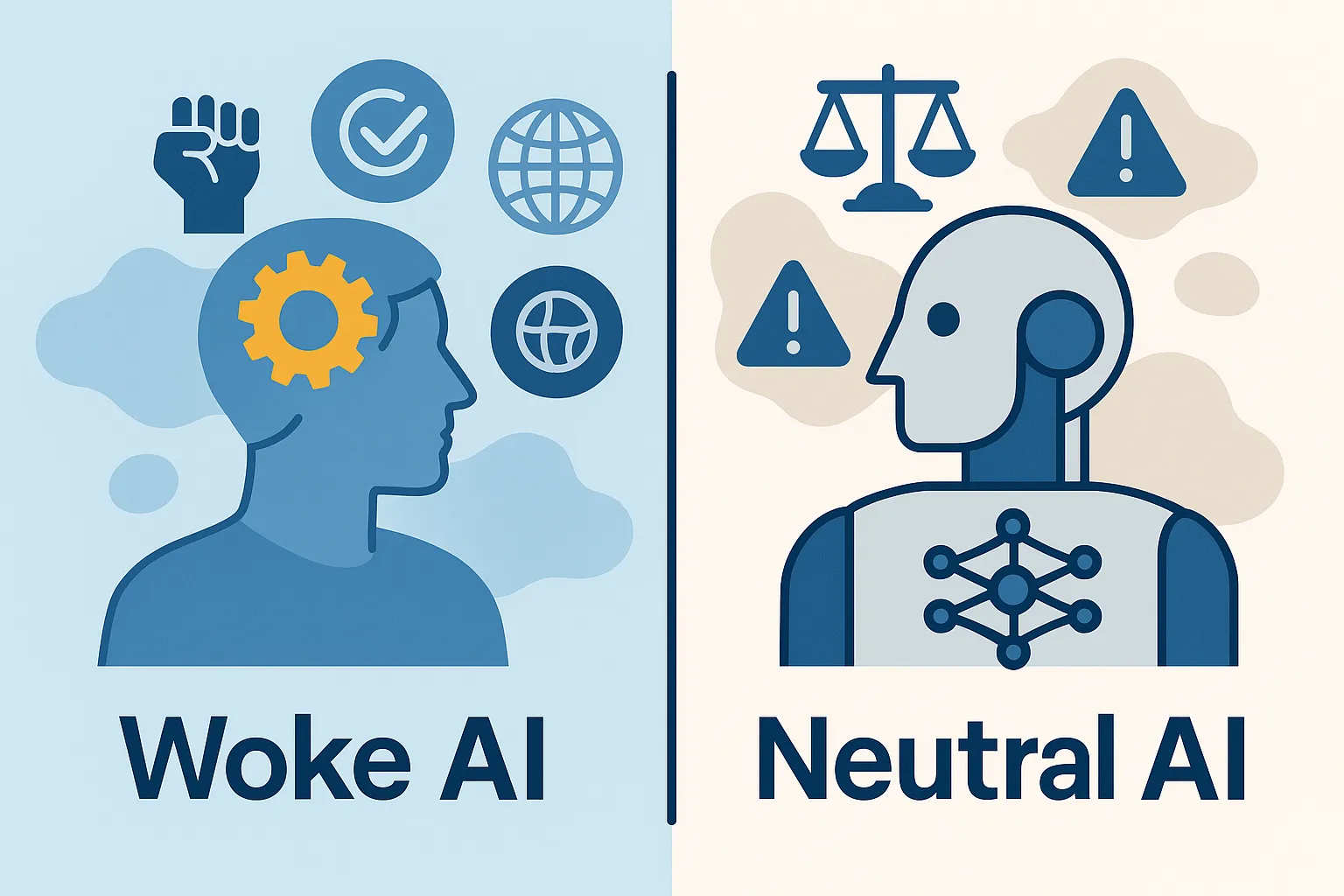
When it comes to artificial intelligence, neutrality is the new battlefield. In 2025, U.S. policymakers introduced rules requiring all AI systems used by federal agencies to be “ideologically neutral,” forbidding references to diversity, equity, inclusion (DEI), systemic racism, or climate change. Proponents said this would prevent bias. Critics said it would institutionalize it. The resulting debate cuts to the core of AI ethics: is neutrality even possible — and if so, who decides what counts as “neutral”?
This controversy exposes a larger truth about the technology itself: AI doesn’t operate in a vacuum. Every model is built on human choices — data, labeling, and values — which means every model carries a worldview, even if that worldview pretends to be impartial. In this post, we’ll unpack the deeper implications of “neutral AI,” explore how the pursuit of fairness collides with politics, and look at what genuine accountability might look like in practice.
Neutrality Isn’t Absence — It’s a Choice
At first glance, the idea of “neutral AI” sounds appealing: systems that simply follow the data, untouched by politics. But neutrality isn’t the absence of perspective — it’s a perspective in itself. To decide what counts as neutral, you have to decide what counts as bias, which instantly introduces value judgments. Data, too, is rarely neutral. It’s shaped by human behavior, historical patterns, and institutional systems that reflect society’s inequalities.
Consider predictive policing models. These systems analyze past crime data to forecast where crimes are most likely to occur. On paper, that sounds objective. In practice, it can reinforce existing bias — because the historical data may overrepresent certain communities due to uneven policing. A “neutral” model that ignores this history will replicate injustice under the guise of fairness. A “woke” model, by contrast, might adjust for those patterns to prevent harm — not to make a political statement, but to ensure that data-driven systems don’t repeat human error.
When “Neutral” Becomes Blind
The push for ideological neutrality stems from legitimate concern: AI systems should not be propaganda machines. Yet banning DEI-related considerations can paradoxically make AI less fair. If developers can’t address bias directly, they can’t fix it either. Rules that forbid acknowledging structural inequalities risk producing models that silently encode them instead.
Take hiring algorithms. If developers aren’t allowed to factor in demographic fairness, they might miss that their model prefers applicants from certain backgrounds — not because of merit, but because training data reflects past hiring patterns. In other words, neutrality without context is not fairness. It’s abdication.
AI systems are already influencing loan approvals, parole decisions, healthcare access, and even which résumés reach a recruiter’s desk. The absence of deliberate fairness mechanisms in these systems doesn’t make them neutral; it makes them unexamined. True neutrality requires awareness — not avoidance — of where data comes from and who it affects.
The Engineering Reality: Measuring Fairness
In technical terms, fairness isn’t about ideology; it’s about error distribution. Models can be evaluated across demographic groups to check whether false positives, false negatives, or accuracy rates differ significantly. If one group experiences higher misclassification rates, the system is biased — regardless of intent. Engineers can use techniques like rebalancing datasets, adjusting thresholds, or applying fairness constraints during training to minimize those disparities.
These are not political decisions — they are empirical design choices backed by measurable outcomes. The same rigor applied to optimizing accuracy or performance can be applied to fairness. Ignoring this because fairness has become politically charged only makes systems less accountable and less trustworthy.
Ideology, Regulation, and the Cost of Simplification
Part of the difficulty lies in governance. Legislators often frame AI policy in moral or political language because it’s easier to debate “wokeness” than statistical fairness metrics. Yet the result is binary thinking: either AI is completely neutral, or it’s ideologically contaminated. Reality is much more complex.
Different domains require different trade-offs. An AI that recommends medical treatments must prioritize safety and patient equity; one that moderates online content must balance free expression with harm prevention. “Neutrality” means different things in each context. A one-size-fits-all rule that forbids acknowledging social context will never capture that nuance — and may end up limiting innovation where responsible fairness work is most needed.
A Path Forward: Responsible Neutrality
So how do we move forward without turning AI into a culture war proxy? The answer lies in transparent, accountable processes rather than abstract ideals. Responsible neutrality means acknowledging bias, documenting assumptions, and proving fairness with evidence rather than rhetoric. It’s not about forcing an ideology into code — it’s about ensuring that technology reflects the world it serves, not just the data it inherits.
Organizations adopting this approach often follow five guiding principles:
- Document everything: Model cards, data statements, and decision logs clarify what’s included, excluded, and why.
- Audit continuously: Regularly test for disparate impact across demographic and contextual dimensions.
- Separate content from context: Evaluate fairness in how the model behaves, not which topics it’s allowed to consider.
- Use hybrid review: Pair automated checks with human oversight to catch blind spots machines can’t detect.
- Report publicly: Transparency builds trust — even when results show imperfection.
Neutrality, in this sense, becomes measurable rather than philosophical. It’s about consistency, clarity, and accountability — not silence on social realities.
Why the Language Matters
Labels like “woke AI” and “neutral AI” can obscure more than they reveal. They frame technical debates in cultural terms, making collaboration harder between policymakers, engineers, and ethicists who might otherwise agree on shared goals. Stripping away the rhetoric allows focus on the underlying question: how do we make systems that treat people fairly, predictably, and transparently?
Ultimately, this debate isn’t about left or right — it’s about right or wrong. Pretending data is neutral doesn’t make it so, and politicizing fairness makes responsible AI harder, not easier. The challenge ahead isn’t choosing between “woke” and “neutral,” but building systems that are both evidence-based and ethically aware.
FAQs
Can AI ever truly be neutral?
Not entirely. Every model reflects the data and choices behind it. But through measurement, documentation, and regular audits, teams can minimize bias and demonstrate accountability.
Does focusing on fairness make AI political?
Fairness is a technical and ethical responsibility, not a political one. It’s about preventing harm and ensuring equitable performance — principles that apply across ideologies.
Why not just remove sensitive data like race or gender?
Excluding these variables doesn’t erase bias. Models can infer them indirectly through proxies like names, locations, or purchasing patterns. It’s better to measure and mitigate bias than pretend it isn’t there.
What does responsible neutrality look like?
It’s transparency in design, regular bias testing, and human oversight. Neutrality isn’t silence — it’s evidence-based fairness.
How can organizations stay compliant and non-partisan?
By focusing on process, not politics. Publish audit criteria, document decisions, and make fairness results public. Accountability is apolitical.



